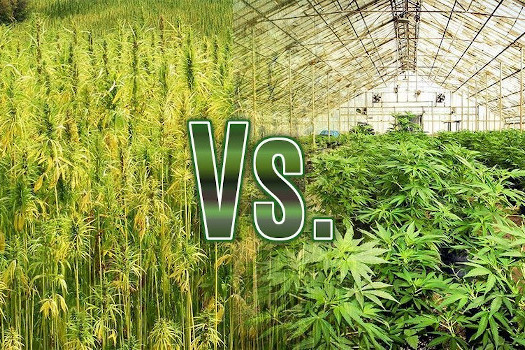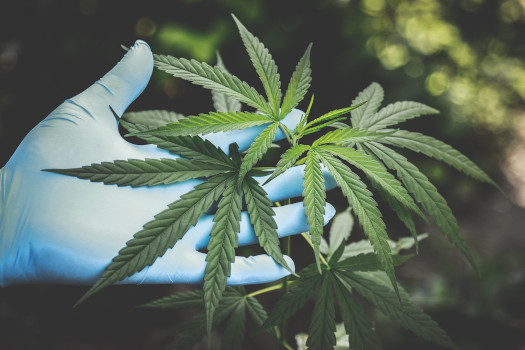An analysis of hemp vs. marijuana

Cannabis strain has eluded the minds of explorers over centuries. With a deep fascination of this commodity, often at times deep laying confusions among its users and distributors make its complete and thorough understanding even more difficult. When we delve deeper into the various iterations cannabis has evolved into throughout numerous different evolutionary cycle, the topic becomes even more tedious resulting in it going undisclosed at times. It is perhaps one of the only natural products that are more commonly known as one of its types instead of its scientific name, a reflection of the deep-rooted ignorance we have regarding knowing the unknown and broadening our retrospective horizons.
A product that is for use for both recreational and medical reasons, cannabis has faced its fair share of support and reciprocated abuse. While the recreational end of the moral stick that its consumers use to ascertain their right of taking the product may have been seen as an excuse by lawmakers over the years, the thick blanket of ignorance is finally lifting unraveling and recognizing the true potential and advantages of this product. Numerous health benefits that were not considered valid but as mere conjuring of addicts are now being proven correct forcing established legislature to amend its doctrines allowing its access to those in need.
There is still a sect of our society that has deep-rooted sentiments against public access to this drug citing harmful effects that supposedly outweigh the positives. These adverse effects can go into two major part; the long term and the short term. The short term effects that this particular sect raises mostly revolve around acute psychotic imbalance. In plain words, these are slowing down of motor senses, nausea, hallucinations and lack of attention. These symptoms are indeed hazardous as a consumer suffering from them may cause life-threatening injuries to themselves or other members of society.
The long term adverse effects of consumption of cannabis, however, are much more dangerous as per the advocating sect that opposes the usage of this product. Firstly, long term exposure may lead to irreversible mental, physical and behavioral changes. Secondly, if the consumer has an existing condition such as hepatitis, usage can be strictly dangerous as toxic fumes may serve as catalysts to far worse disease. Pregnant females are also urged to restrict or stop the usage of this product entirely during their pregnancies as harm may inflict on the fetus’s health.
Now that we have discussed the harmful effects and the confusions that have eluded the minds of millions over the years; let’s bring our attention back to the topic of the product’s iterations and strains. Firstly it is essential to understand that the product that is widely known as marijuana as a type or species is indeed cannabis with marijuana being a single type or a strain of cannabis.
Secondly, another confusion that raises its ugly head time and time again are the limited knowledge people have regarding the difference between hemp and marijuana. As described previously, cannabis being the name of a plant species, is divided into two types. Indica and Sativa. Although hemp is strictly considered a kind of the Sativa branch of the species, marijuana can is a product that contains both Indica and Sativa subspecies. The other significant difference is related to the appearance of the two types of subspecies. To a trained eye, marijuana will appear having a short husky overall structure, densely thick buds, and broader leaves whereas hemp may look like a thin formation with long delicate leaves having an overall weaker structure.

The anatomical differences are perhaps that set these tow distant cousins of the same family apart the most. Cannabis is composed of two major chemical products; Tetrahydrocannabinol (THC) and Cannabidiol (CBD). While these two chemicals remain prevalent in all the types of cannabis subspecies, in hemp and marijuana specifically, their composition differs. Although marihuana contains high potencies of THC, averaging between 30%-40%, hemp on the other hand only has 0.3%-0.4% potency of this compound. THC being an intoxicant and a psychoactive compound results in hemp being used in industrial products whereas marijuana is strictly for use for medicinal and recreational purposes.
Their anatomical differences also mean that the two products are sources of entirely different types of products and byproducts. Paper products, clothing items, building materials, and industrial substances primarily make use of hemp in their composition. It also serves as an integral jigsaw piece for numerous biofuels, food products, artificial taste inducers used in confectionaries and oils. Marijuana is also a source of abundant elements for food products but is mainly for use in capsules, medicines, vaporizers, and confectionaries. These usages mean that the estimated market of these two products ranges from $400-$452 million for hemp and $10-$20 billion dollars for marijuana.
The legality is also another prospect of debate when discussing the differences between the two subspecies of cannabis. This debate mostly revolves around the anatomical features of the two products, mostly THC. Although THC is a compound that is bread and butter of most household item manufacturers, its growing permission, especially in the form of hemp, comes under the stress of jurisdictional laws and ethics. Since most countries have their independent laws governing the sale, harvesting, and transportation of hemp albeit for industrial purposes, they don’t exactly coincide with their trading partners, resulting in a host of different problems for a massive chunk of the industry.
Marijuana, on the other hand, is a declared prohibited and illegal drug in most parts of the world. This prohibition results in cannabis and its derived products landing in black markets and in the hands of banned outfits that use it to extort money and often cause violence amongst the vulnerable members of the society. Although these cultural taboos are slowly easing with the help of a changing mindset and a more open form of governance in most parts of the world including the United States of America, it is the opposing forces that still cause the majority of problems.